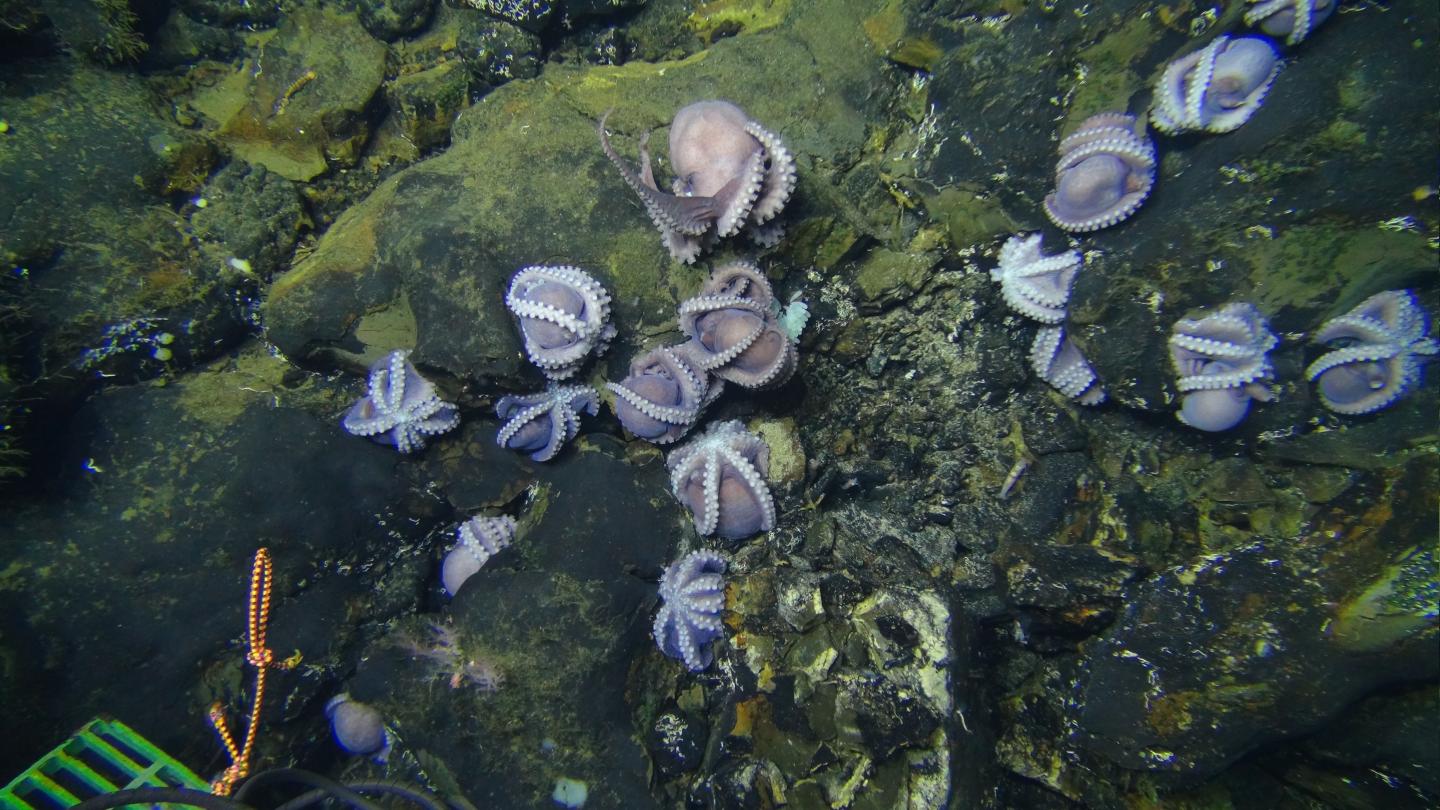Scientists used a submersible vehicle to study Purple Octopus moms in the dark waters along a rocky seabed and discovered some weird behavior. There were hundreds of octopuses of which most were mothers, clinging to the hardened lava surrounding an undersea volcano, in order to protect their eggs until they hatch.
According to researchers, the sight of the Purple Octopus moms was rather shocking, as the cameras captured about 100 octopuses present in one of the clusters. They noticed that most of them were mothers that were close to their eggs which were attached to the lava rock.
This particular species is a little-known one in the genus Muusoctopus, which is why researchers were particularly interested in this discovery. Usually they are seen as loners. Seeing 100s of the specimen was quite an astonishing sighting for the scientists.
The scientists were surprised by one more thing. The colony gathered at an area where the water temperatures are much warmer than it is appropriate for this particular species, especially for Purple Octopuses. The specimen could have trouble getting oxygen from water that is so warm and, thus have difficulties breathing. Moreover, due to the warm temperatures, after a close inspection of the colony, scientists found that the embryos weren’t developing, later writing in their study that the adults were “unlikely to survive.”
The behavior of the Purple Octopus moms and why they attached their eggs there puzzled the scientists.
“When I first saw the photos, I was like, ‘No, they shouldn’t be there! Not that deep and not that many of them,'” study co-author Janet Voight, an associate curator of zoology at the Field Museum of Natural History in Chicago, said in a statement.
The marine research took place on the Dorado Outcrop that is located at 155 miles west of Costa Rica at a depth of 9,842 feet.
“Never in my wildest imagination did I ever imagine finding something like this,” Voight told Newsweek. “Two miles [down,] that is so much deeper than one would expect a whole bunch of octopuses. Maybe a handful, it’s toward the end of their depth range as far as we know, but to see so many in such a small area? It just blew me away.”
Voight is among the authors of the paper that was published in the April edition of the journal Deep Sea Research Part 1. The scientists studied the Purple Octopus moms on the Dorado Outcrop in 2013 and 2014. One of the researchers, Annie Hartwell watched the 231 hours of videos that was provided by the researchers of the octopuses in the deep sea.
“It sounds fun, but after 24 hours it gets tiresome,” she said. “You’re afraid even if you blink you’ll miss something.”
Scientists suggest one explanation for the animals that decided to breed in such warm waters. The cracks in those rocks can be seen as nurseries for the baby octopuses. The moms look for crevices and cracks where they can lay their little ones. However, according to the team, there were cooler crevices nearby that had cooler water. However, the paper suggests that the octopus moms preferred the areas where they were brooding, for some unknown reason.
https://www.youtube.com/watch?v=Z8zUzqO_rQE





